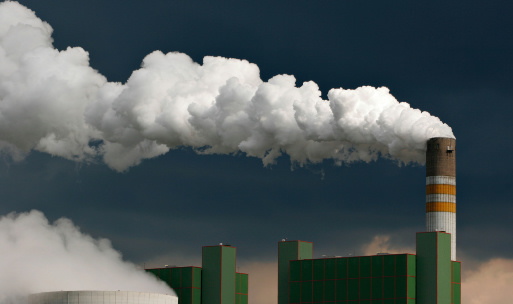Ammonia (NH3): Understanding Its Sources, Environmental Impact, Health Risks, and Safety Measures
Ammonia (NH3) is a highly versatile compound commonly used in agriculture, industry, and manufacturing. However, ammonia emissions also pose environmental and health risks if not managed properly. This article explores the primary sources of ammonia emissions, its behavior in the environment, the potential health effects of exposure, safety regulations for handling ammonia, and methods for monitoring air quality.
What is Ammonia (NH3)
Ammonia is a compound consisting of one nitrogen and three hydrogen atoms. It is naturally found in the environment and plays a crucial role in nitrogen cycling within ecosystems. Ammonia has a sharp, pungent smell and is colorless, highly soluble in water, and lighter than air. Its primary industrial production method, the Haber-Bosch process, combines nitrogen from the air with hydrogen from natural gas under high temperatures and pressures.
Properties of Ammonia
Ammonia is characterized by several unique properties that make it versatile:
- Physical State: Ammonia is a gas at room temperature and pressure but can be compressed into a liquid for storage and transport.
- Odor: It has a pungent, suffocating odor that can be detected even at low concentrations.
- Solubility: Ammonia is highly soluble in water, forming ammonium hydroxide, a solution used in various household and industrial products.
- Boiling Point: Ammonia has a boiling point of -33.34°C, allowing it to vaporize easily, which is advantageous for certain applications like refrigeration.
- Corrosiveness: It can corrode metals, which is a consideration when storing and handling ammonia.
How is Ammonia Produced?
The production of ammonia on an industrial scale is primarily achieved through the Haber-Bosch process, which synthesizes ammonia by combining nitrogen (from the air) and hydrogen (usually derived from natural gas or methane). This process, invented in the early 20th century, is essential to the production of ammonia for agricultural fertilizers. Key steps in the process include:
- Hydrogen Production: Hydrogen is generated by reforming methane or water-gas shift reactions.
- Nitrogen Sourcing: Nitrogen is separated from air, which is primarily nitrogen.
- Ammonia Synthesis: Under high temperatures (400–500°C) and pressure (150–200 atmospheres), nitrogen and hydrogen are combined in the presence of an iron catalyst to form ammonia.
Applications of Ammonia
Ammonia’s versatility allows it to serve in numerous applications across different industries:
Agriculture
Ammonia is widely used in fertilizers, where its nitrogen content supports plant growth. Nitrogen is a key nutrient for plants, playing a vital role in protein synthesis and energy production. The two primary forms used in agriculture are:
- Anhydrous Ammonia: Applied directly into the soil.
- Ammonium Nitrate and Urea: Other forms where ammonia is chemically bonded with other elements to release nitrogen gradually.
Refrigeration
Due to its low boiling point, ammonia is an effective refrigerant. Ammonia refrigeration systems are particularly common in industrial settings, such as food processing and cold storage, where large-scale cooling is necessary. However, ammonia requires careful handling due to its toxicity.
Cleaning Products
Ammonia is present in many household cleaners, particularly glass and surface cleaners. It effectively cuts through grease and grime, leaving surfaces clean and shiny. However, it must be used carefully, as it can release toxic fumes when combined with other chemicals, like bleach.
Water Treatment
In water treatment, ammonia is used as a source of nitrogen for microorganisms in biological treatment processes. It helps in the removal of contaminants and the stabilization of water chemistry. Ammonia can also combine with chlorine to form chloramines, which are used as disinfectants in drinking water.
Manufacturing and Metallurgy
Ammonia is involved in metal processing and manufacturing, where it is used to create nitriding atmospheres that enhance the surface hardness of metals. It is also used in the manufacture of plastics, explosives, textiles, pesticides, and dyes.
Environmental Impact of Ammonia
Ammonia emissions can have significant environmental consequences. Some key concerns include:
Air Pollution and Greenhouse Gases
When released into the atmosphere, ammonia can contribute to the formation of fine particulate matter, which affects air quality and can harm human health. Additionally, ammonia production is energy-intensive and results in greenhouse gas emissions.
Water Pollution and Eutrophication
Runoff from agricultural fields treated with ammonia-based fertilizers can enter water bodies, leading to nutrient pollution. Excess ammonia and nitrogen cause eutrophication, a process that promotes algae blooms and depletes oxygen levels, endangering aquatic life.
Soil Degradation
Overuse of ammonia-based fertilizers can disrupt soil pH and reduce its quality over time. This degradation affects crop yield and can necessitate additional soil treatments.
Ammonia Concentrations and Health Effects
Ammonia exposure can range from low levels commonly found in the environment to high concentrations in industrial settings. The effects of ammonia exposure vary based on concentration and duration:
Low to Moderate Concentrations
- Odor Detection: Ammonia’s strong smell is often noticeable even at very low concentrations (5-50 ppm), making it one of the earliest indicators of a potential leak or exposure.
- Irritation: At concentrations above 50 ppm, ammonia can cause mild irritation to the eyes, throat, and respiratory tract. These symptoms may include burning sensations, coughing, and discomfort.
High Concentrations
- Severe Irritation and Damage: At concentrations of 300 ppm or higher, ammonia exposure can lead to severe irritation, coughing, chest tightness, and respiratory distress.
- Acute Exposure Risks: Prolonged exposure to high levels (500 ppm and above) can result in more serious health effects, including lung damage, chemical burns, and, in extreme cases, asphyxiation.
- Risk for Sensitive Individuals: People with respiratory conditions, such as asthma, may experience aggravated symptoms at even lower levels of ammonia exposure.
NH3 Levels and Their Health Effects
To understand the severity of health risks associated with NH3, it is helpful to examine specific concentration ranges:
| Ammonia Concentration (ppm) | Health Effects |
| 0-5 ppm | Background level, no health effects. |
| 5-50 ppm | Detectable odor, slight discomfort. |
| 50-150 ppm | Irritation of eyes, nose, throat. |
| 150-300 ppm | Coughing, more pronounced irritation. |
| 300-500 ppm | Severe irritation, risk of lung damage. |
| 500+ ppm | Acute health risks, including lung damage and potential asphyxiation. |
The Occupational Safety and Health Administration (OSHA) has set the permissible exposure limit (PEL) for ammonia at 50 ppm for an 8-hour workday. The National Institute for Occupational Safety and Health (NIOSH) recommends a short-term exposure limit (STEL) of 35 ppm for 15 minutes.
How to Detect Ammonia Gas
By monitoring ammonia levels, agencies can assess the effectiveness of emission control measures and ensure compliance with air quality standards. Additionally, ambient air monitoring can inform communities about potential health risks from ammonia pollution.

EC Hazardous Toxic Gas Detection Sensor Module ZE03
- CO,O2,NH3,H2S,NO2,O3,SO2, CL2,HF,H2,PH3,HCL, etc.
- See manual
- Read More
Conclusion
Ammonia is a crucial compound in various industries, but its emissions can significantly impact both the environment and human health. Understanding ammonia's sources, health risks, and regulations for handling is essential for minimizing exposure risks. Monitoring ambient air quality and using specialized ammonia detectors can help industries and individuals maintain safe environments, protecting both public health and the ecosystem.
By following safety guidelines and utilizing air quality monitoring technologies, industries can responsibly manage ammonia emissions and contribute to healthier workplaces and communities.











